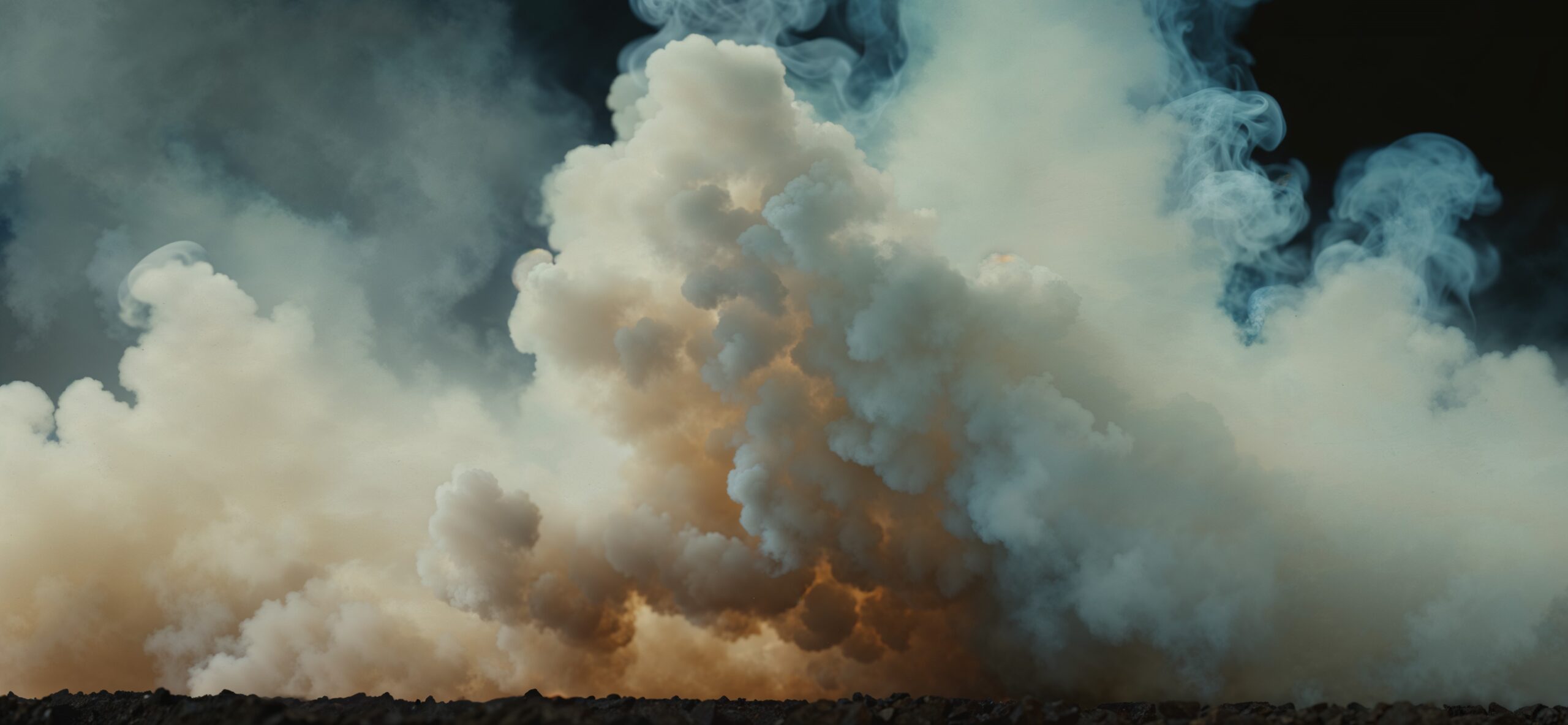A recent industrial explosion in Roseville, Michigan has drawn national attention to the serious risks faced by workers in manufacturing, automotive, aerospace, and defense industries. The industrial explosion destroyed a 20,000-square-foot facility and prompted a multi-agency investigation. Incidents like this one serve as a stark reminder of how quickly workplace hazards can escalate into life-threatening emergencies.
At Kherkher Garcia, we represent injured workers and their families who are affected by industrial disasters. In this blog, our workplace injury attorneys break down the dangers of industrial fires, the specific hazards found in high-risk industries like automotive and aerospace manufacturing, and the legal rights workers have when disaster strikes. Whether you’re an employee, a family member, or a concerned resident, understanding these risks – and how to respond – is critical to protecting your health, safety, and future.
Investigation Ongoing in Michigan Industrial Explosion
An investigation is underway following a major explosion and fire at RCO Engineering, an industrial facility in Roseville, Michigan. The incident drew a large response from multiple agencies including the Roseville Fire Department, the Michigan Department of Environment, Great Lakes, and Energy (EGLE), the U.S. Environmental Protection Agency (EPA), and the Bureau of Alcohol, Tobacco, Firearms, and Explosives (ATF). These agencies are collaborating to determine the cause of the fire and assess the environmental impact.
The explosion sent thick smoke into the sky, alarming nearby residents and workers. As a precaution, a temporary shelter-in-place advisory was issued due to the potential release of hazardous chemicals, though it was lifted later that day once air quality was confirmed to be safe. Fortunately, no injuries were reported among employees or emergency responders. The fire, however, led to the collapse of the 20,000-square-foot facility’s roof and total destruction of the building.
Cleanup efforts began immediately, with emergency crews securing the site, relocating hazardous materials into containers, and assisting investigators with debris examination. Debris was also discovered in a nearby storm sewer, prompting further environmental checks for possible runoff contamination downstream. Authorities remain focused on understanding what triggered the initial blast, and environmental monitoring continues to ensure the safety of the surrounding area.
While no injuries were reported in this particular incident, many workers are not as fortunate when industrial fires and explosions occur. These events often result in severe injuries, long-term disabilities, or even fatalities.
The Hazards of Industrial Fires and Explosions
Industrial fires can occur in any manufacturing or processing environment, but the risks multiply when workplaces handle chemicals, fuels, electrical systems, or heavy machinery. An overlooked safety protocol, faulty wiring, or improperly stored materials can ignite a chain reaction in seconds. Explosions often follow fires or occur simultaneously when pressurized systems or volatile compounds are involved.
Key hazards include:
- Toxic chemical release: Fires can release hazardous substances into the air, affecting workers’ respiratory systems and contaminating surrounding environments.
- Structural collapse: Explosions can cause buildings to cave in, trapping or crushing workers.
- Secondary hazards: Fire suppression systems, power outages, and water contamination can create ongoing risks.
- Environmental damage: Smoke, runoff, and debris from industrial fires may affect entire communities, not just the plant site.
These dangers make it critical for employers to follow strict safety procedures and for workers to understand the risks they face on the job.
Unique Hazards in Automotive, Aerospace, and Defense Industries
Industrial settings vary in terms of risk exposure, and the automotive, aerospace, and defense sectors are particularly high-risk due to the nature of their operations.
Automotive Industry Risks
Workers in automotive manufacturing regularly deal with:
- Combustible materials such as fuel, oil, paint, and solvents
- Welding equipment and robotic systems capable of generating sparks
- Battery technology, particularly lithium-ion batteries, which are prone to thermal runaway and combustion
- Machinery malfunction in assembly lines or press systems
A single electrical short or material handling error can ignite fires that spread quickly across a production floor.
Aerospace Industry Risks
Aerospace manufacturing often involves:
- High-performance composite materials that release toxic fumes when burned
- Precision welding and heat treatment of metal components
- Pressurized systems for hydraulics and fuel testing
- Advanced propulsion systems and volatile propellants
Fires and explosions in aerospace plants can escalate rapidly due to confined testing chambers, highly flammable materials, and complex machinery that’s difficult to shut down in emergencies.
Defense Industry Risks
The defense sector poses even more extreme risks due to:
- Weapons manufacturing, involving explosives, propellants, and detonators
- Chemical mixing operations for energetic materials
- Secure facilities that may delay emergency responses due to clearance protocols
- Hazardous testing environments with confined blast zones
In these environments, even routine errors can cause devastating chain reactions. Moreover, many defense facilities are located near residential zones, further increasing the community impact when an incident occurs.
Common Industrial Explosion Injuries
The injuries workers suffer during industrial fires and explosions are often severe and life-altering. In addition to the immediate risk of death, survivors may face long-term medical care, disability, and emotional trauma.
Common injuries include:
- Burns: From first-degree to third-degree, burns can require skin grafts, surgeries, and extended rehabilitation.
- Smoke inhalation: Breathing in toxic fumes may cause respiratory distress, chronic lung conditions, or chemical poisoning.
- Traumatic injuries: Blunt-force trauma, fractures, and lacerations from collapsing structures or flying debris.
- Hearing loss: Explosions can damage hearing permanently due to the intensity of the blast.
- Neurological damage: Head injuries and exposure to neurotoxic chemicals may impair brain function.
- Post-traumatic stress disorder (PTSD): The psychological toll of surviving an explosion can have long-lasting effects on mental health.
These injuries not only impact a worker’s ability to earn a living but also strain families, finances, and quality of life.
The Broader Impact on Workers and Communities
While the physical injuries from industrial disasters are devastating, the aftermath often extends far beyond the jobsite. Families are affected emotionally and financially. Communities may experience environmental contamination, evacuation orders, and long-term health concerns.
Economic disruption is common when large manufacturing plants shut down for investigations and cleanup. Workers may lose wages, benefits, or even their jobs if the plant is permanently closed. Medical costs – including surgery, rehabilitation, and long-term care – can quickly spiral into debt if workers lack adequate coverage or support.
Community health risks are another serious concern. An industrial explosion can send smoke, chemicals, and particulate matter into the air and waterways. In many cases, environmental agencies must conduct air and water quality testing to determine whether nearby residents are at risk.
How Workers Can Protect Their Rights After an Industrial Explosion
If you’ve been injured in an industrial fire or explosion, it’s essential to take immediate steps to protect your health and your legal rights. Here’s what you need to know:
- Seek Medical Attention Immediately: Even if injuries appear minor, prompt medical treatment creates a record of your condition and ensures internal injuries or exposure symptoms aren’t overlooked.
- Report the Incident: Notify your employer of the injury as soon as possible and ask for documentation. Delays in reporting may harm your ability to recover compensation.
- Document Everything: Take notes, photos, and gather contact information for witnesses. Record your symptoms, missed workdays, and any communication with your employer or safety personnel.
- Understand Your Workers’ Compensation Rights: You may be eligible for medical benefits, wage replacement, and rehabilitation services through your employer’s workers’ compensation policy. However, these benefits often fall short, especially in serious injury cases.
- Explore Third-Party Liability Claims: In some industrial fire cases, third parties, such as equipment manufacturers, contractors, or chemical suppliers, may be partially or wholly responsible for the incident. A personal injury or product liability lawsuit may provide greater compensation than workers’ comp alone.
Why Legal Representation Matters
Industrial explosion cases are complex. They often involve multiple parties, federal regulations, and overlapping areas of law such as OSHA violations, environmental liability, and employer negligence. Insurance companies may try to downplay your injuries, shift blame, or pressure you into lowball settlements.
At Kherkher Garcia, we fight for workers injured in dangerous environments. We collaborate with medical experts, safety consultants, and accident investigators to build strong cases that hold negligent parties accountable. Our goal is to not only secure the compensation you deserve but also to promote safer working conditions by holding companies to higher safety standards.
Industrial fires and explosions are tragic reminders of what can go wrong when safety measures fail. For workers in high-risk industries like automotive, aerospace, and defense, the consequences of a single incident can be life-changing.
Get the Legal Help You Deserve After an Industrial Explosion
If you have been injured in an industrial explosion or other incident, you may be entitled to compensation. The physical, emotional, and financial toll of these incidents can be overwhelming, but you don’t have to navigate it alone. At Kherkher Garcia, our experienced industrial accident attorneys are here to fight for your rights, investigate every angle of your case, and hold negligent parties accountable.
We have helped countless injured workers recover the compensation they need for medical bills, lost wages, long-term care, and more. Don’t let corporate negligence go unchecked. Contact us today for a free, confidential consultation. We will help you understand your legal options and take decisive action toward recovery.
Call now to start your consultation at 713-333-1030. You can also contact us online via our website form.
Image by freepik


